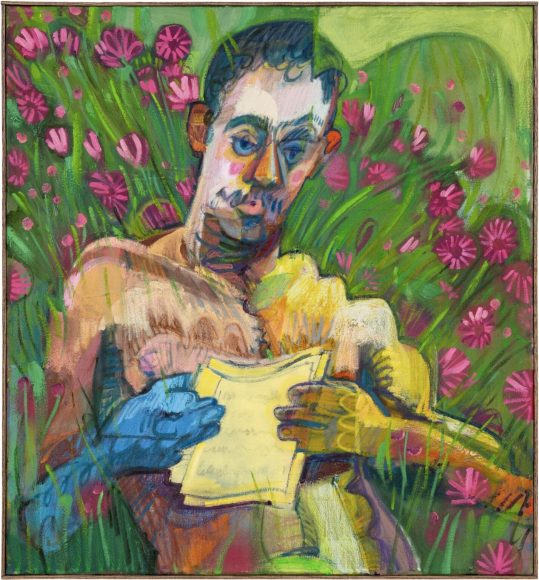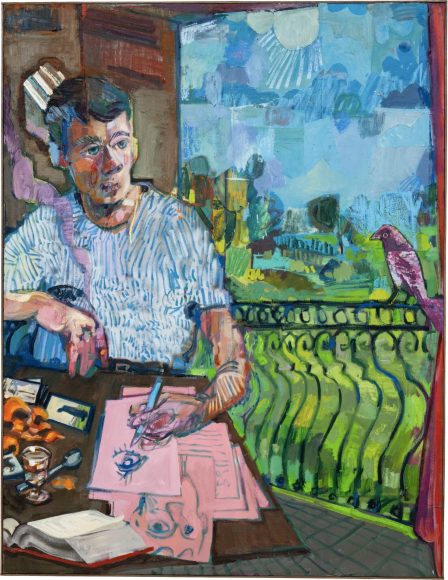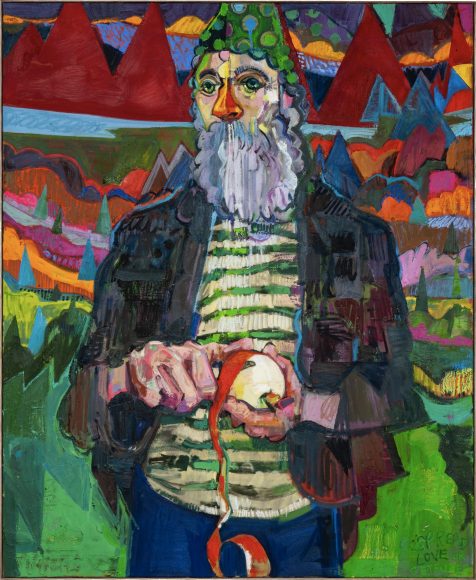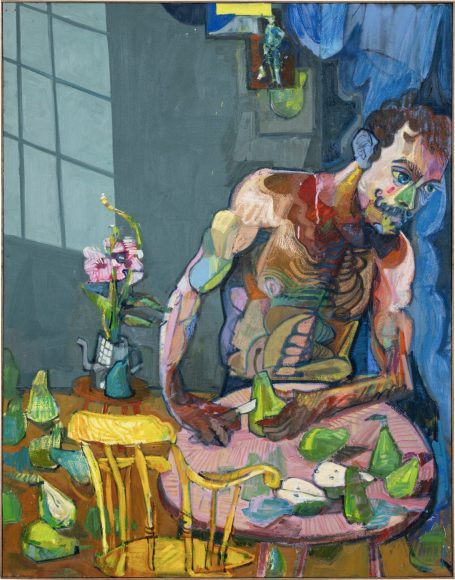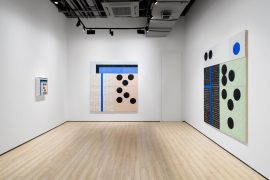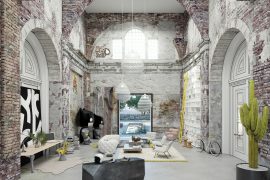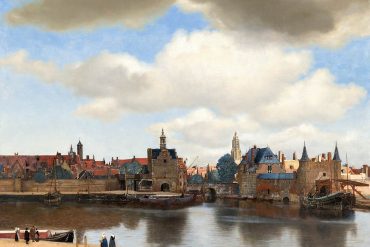In the contemporary art world, artists explore the relationships between humanity and nature, literature and technology through various mediums. Andrew Salgado uses painting to blend literature with visual art; Mark Goudy employs ceramics to interpret the balance between geometry and nature; and Of the Oak redefines the boundaries of ecology and perception through digital technology.
Despite their different mediums, all three artists respond to the same core question: how can art connect individual experiences with the broader world?
01 Literature and Painting Intertwined: Andrew Salgado’s “Book Portraits”
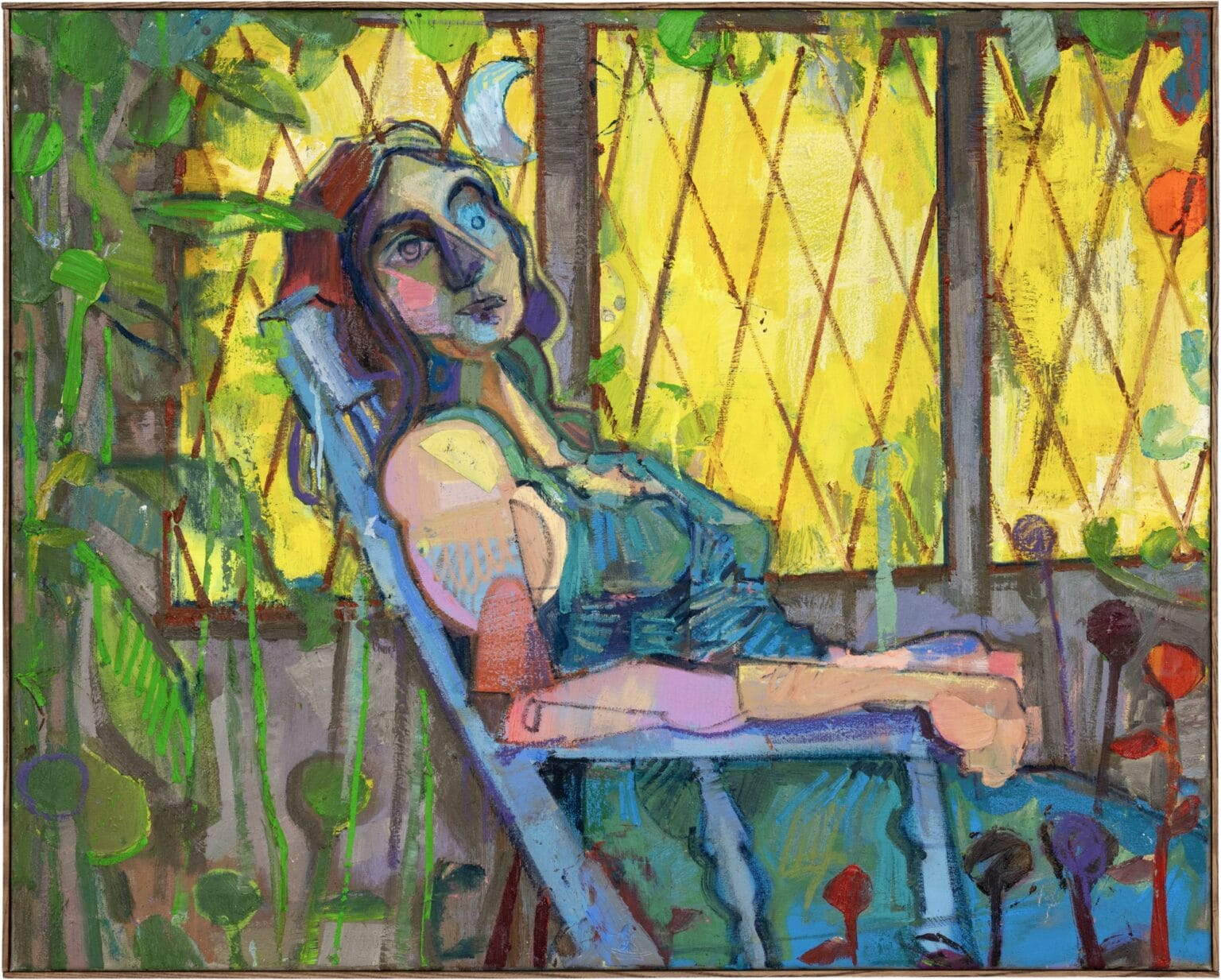
“When We Cease To Understand The World (Grothendieck’s Ghost)”(2025), oil and oil pastel on linen, 180 x 160 centimeters
Salgado’s work Self-Portrait as a Stack of Books embodies the idea that “we are what we read.” On his canvases, the lines between literature and painting blur—Ottessa Moshfegh’s novel My Year of Rest and Relaxation becomes a languid portrait, while Véra Nabokov’s resilience is captured through brushstrokes and color.
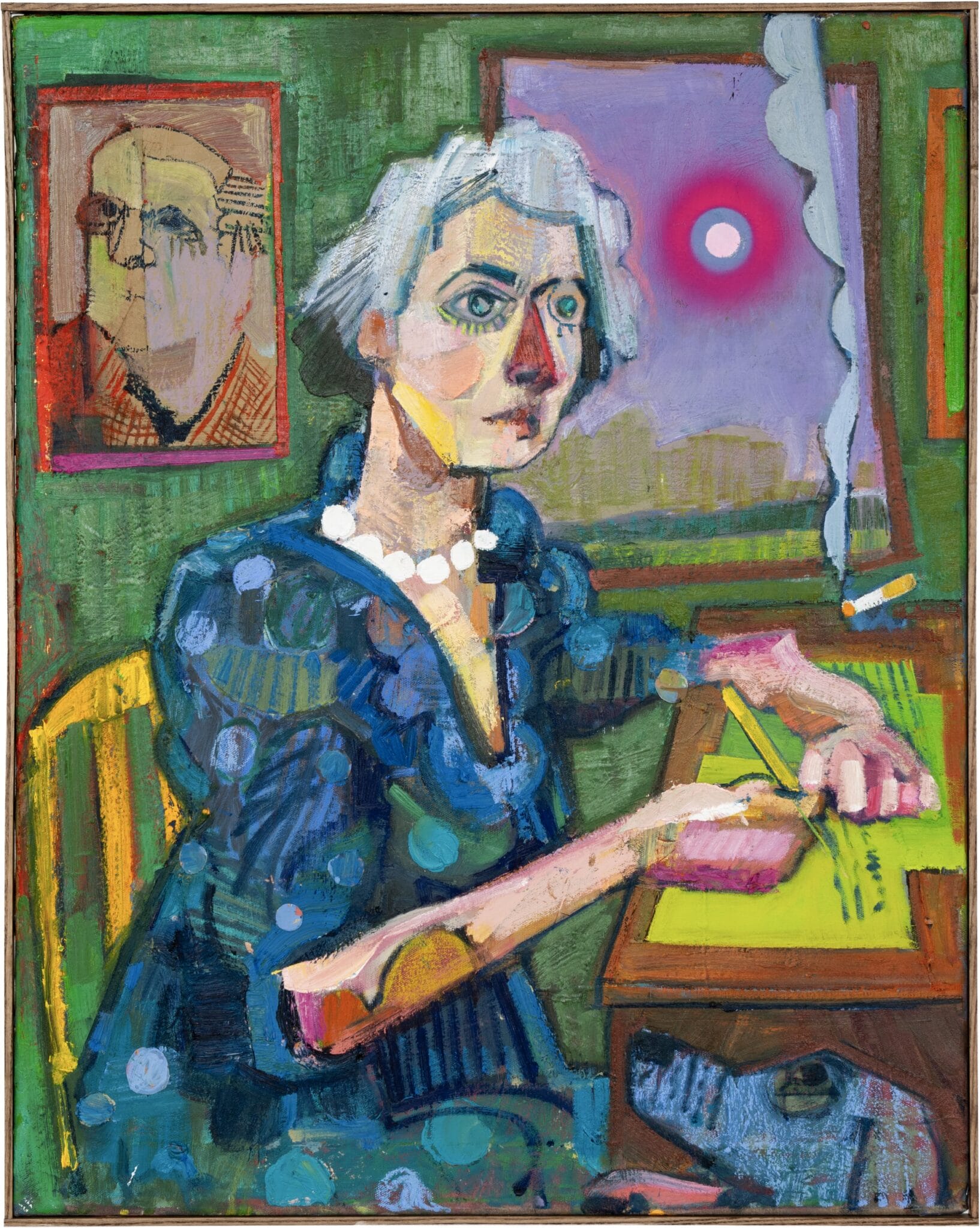
“Véra (Please Come Over, You’re Always Welcome)” (2025), oil and oil pastel on linen, 76 x 61 centimeters
This approach stems from Salgado’s fascination with “citation.” He admits to being deeply influenced by writers like Virginia Woolf and Jorge Luis Borges, who themselves drew inspiration from art. “Words and images can transform into each other,” he says. “Nabokov referenced over 150 paintings in his works—why can’t painting pay homage to literature?”
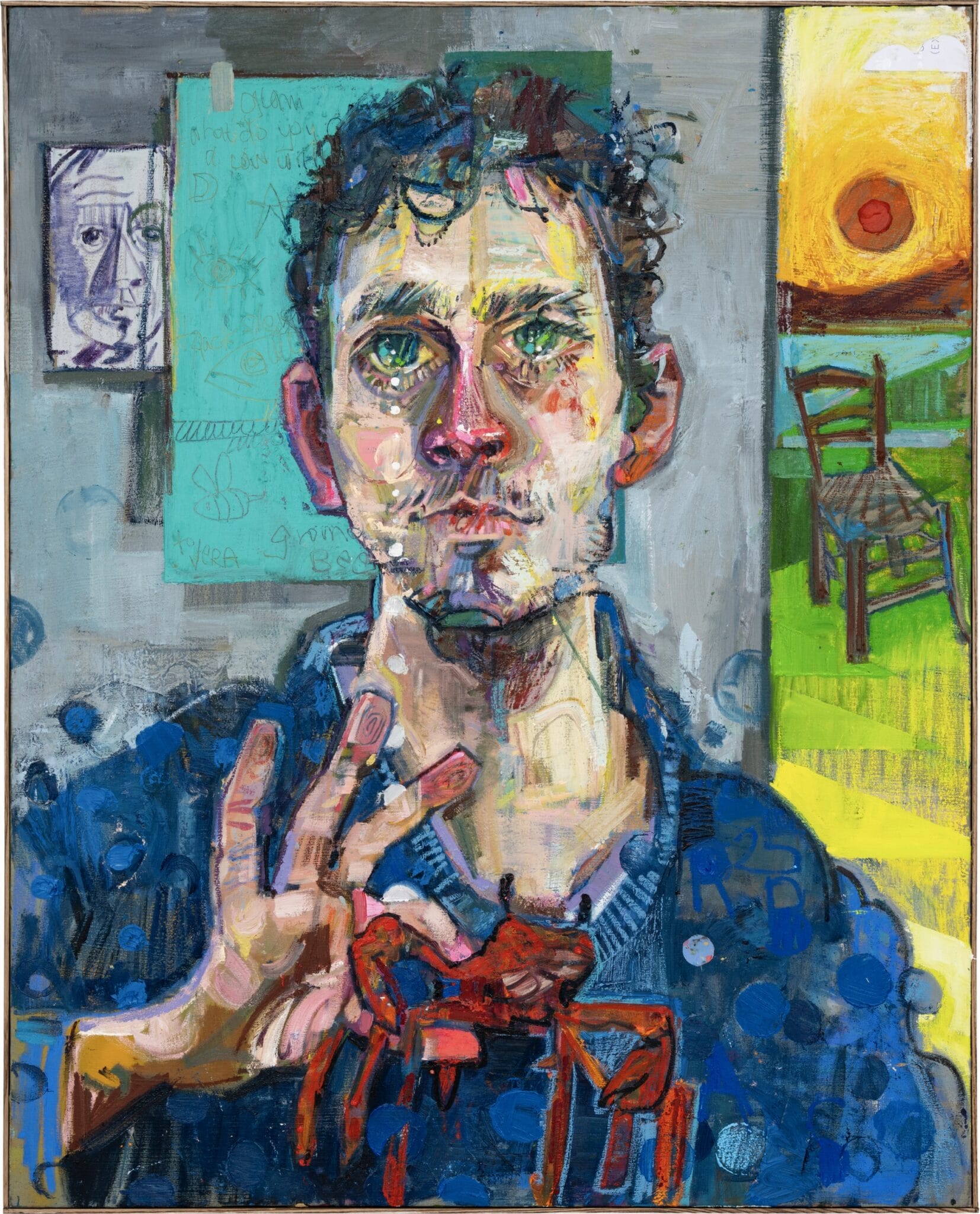
“The Last Evening On Earth” (2025), oil and oil pastel on linen, 125 x 100 centimeters
Technically, Salgado favors layering oil paint and pastels. The irregular streaks and patches on his canvases give clothing or faces an unfinished, dynamic quality, like memories—hazy yet full of possibility. This openness is central to his vision: “Viewers are free to interpret. There are no wrong answers, whether you find meaning in books, paintings, or thoughts.”
02 The Minimalist Philosophy of Ceramics: Mark Goudy’s “Origami Balance”
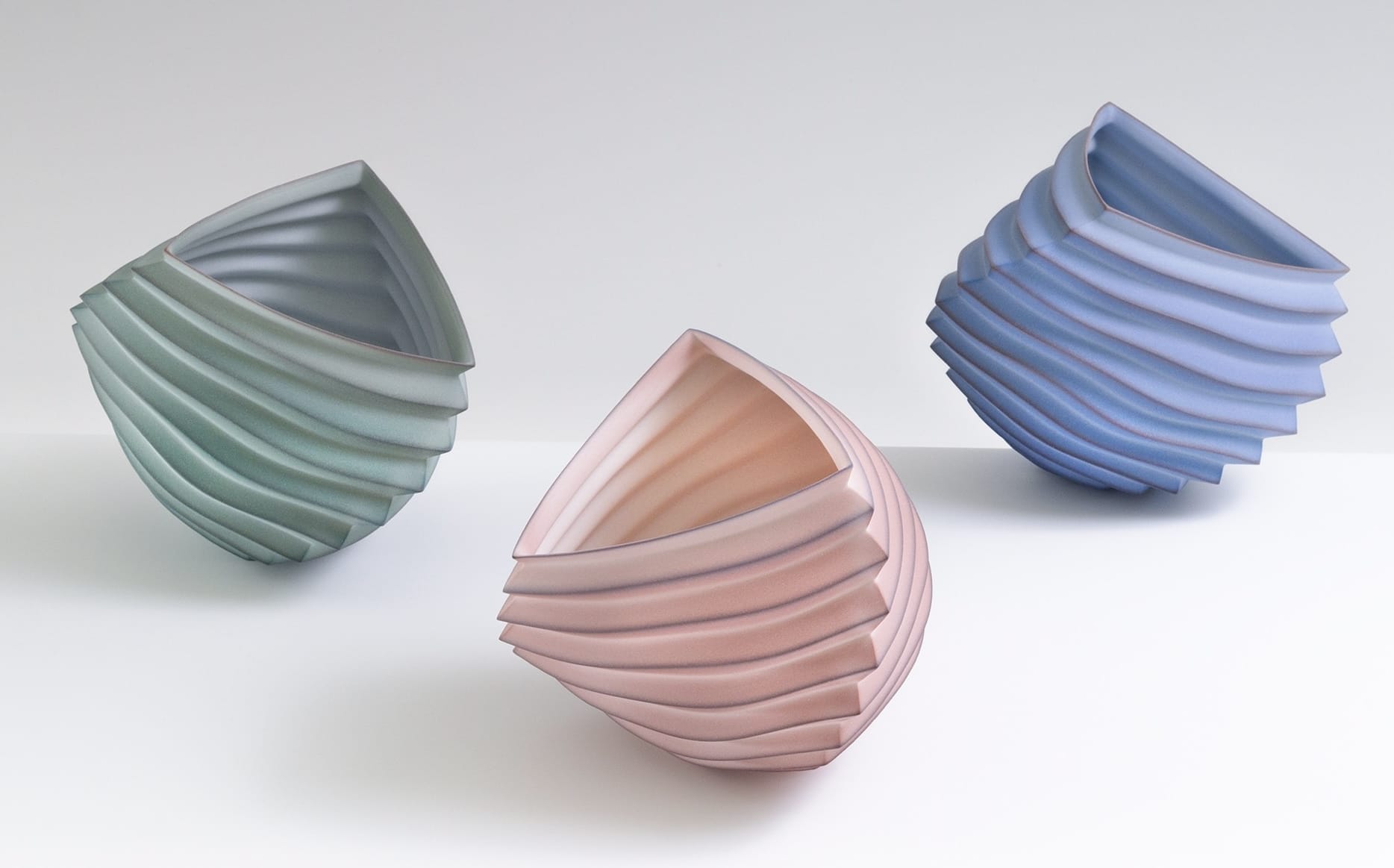
If Salgado’s paintings extend literature, Goudy’s ceramics are a precise calculation of physics and nature. His Origami series draws inspiration from paper art but pushes porcelain to its limits. Each piece is less than a millimeter thick yet finds equilibrium through folded structures, gently swaying before settling back into place. “They resemble geometric forms in nature—simple yet complex,” Goudy explains.
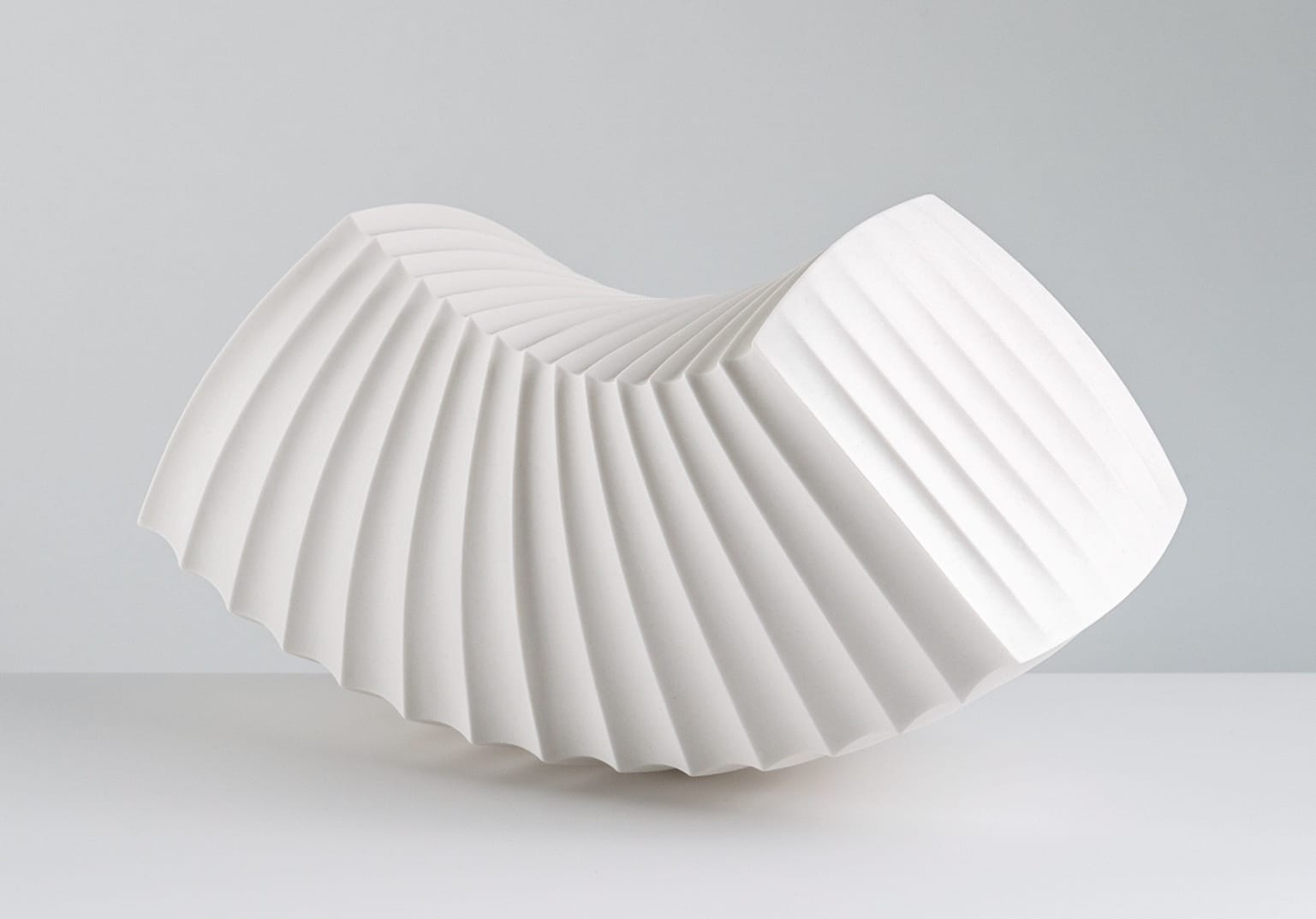
A former 3D graphics engineer, Goudy’s background shapes his process. He designs models using algorithmic software before firing them in white or black porcelain. The colors come from metallic salts—cobalt, gold, and chromium pigments diffuse across the unglazed surface, creating gradients. “The salts flow through the clay’s pores, gathering at the edges to highlight the folds,” he says. This technique makes each piece unique, like vessels pierced by light.
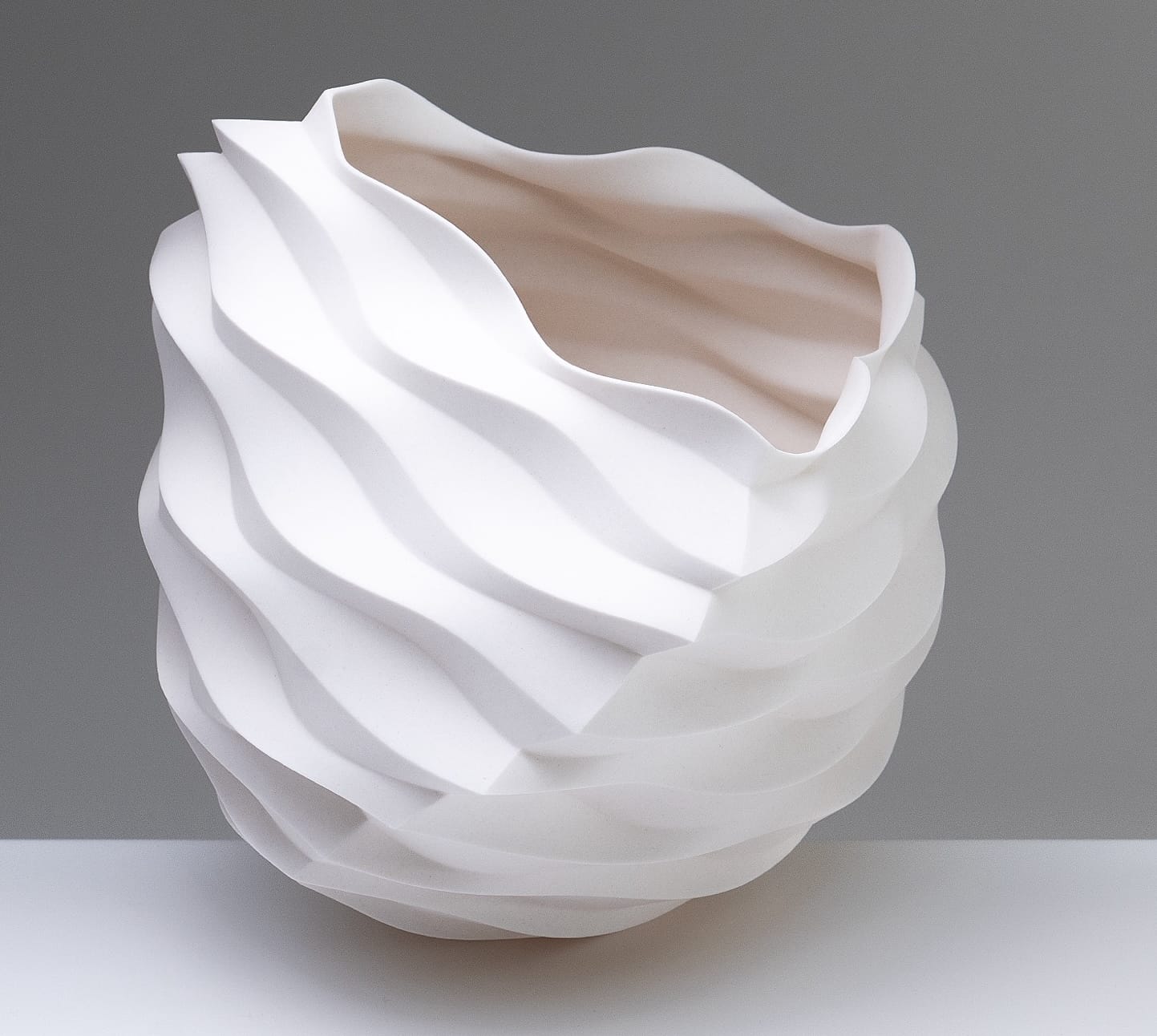
Goudy particularly favors cobalt blue for its evocation of “water’s depth and the elusiveness of distance.” His works, though static, imply motion and transformation, mirroring nature’s delicate balance between stability and flux.
03 Digital and Ecological Fusion: Of the Oak’s Immersive Narrative
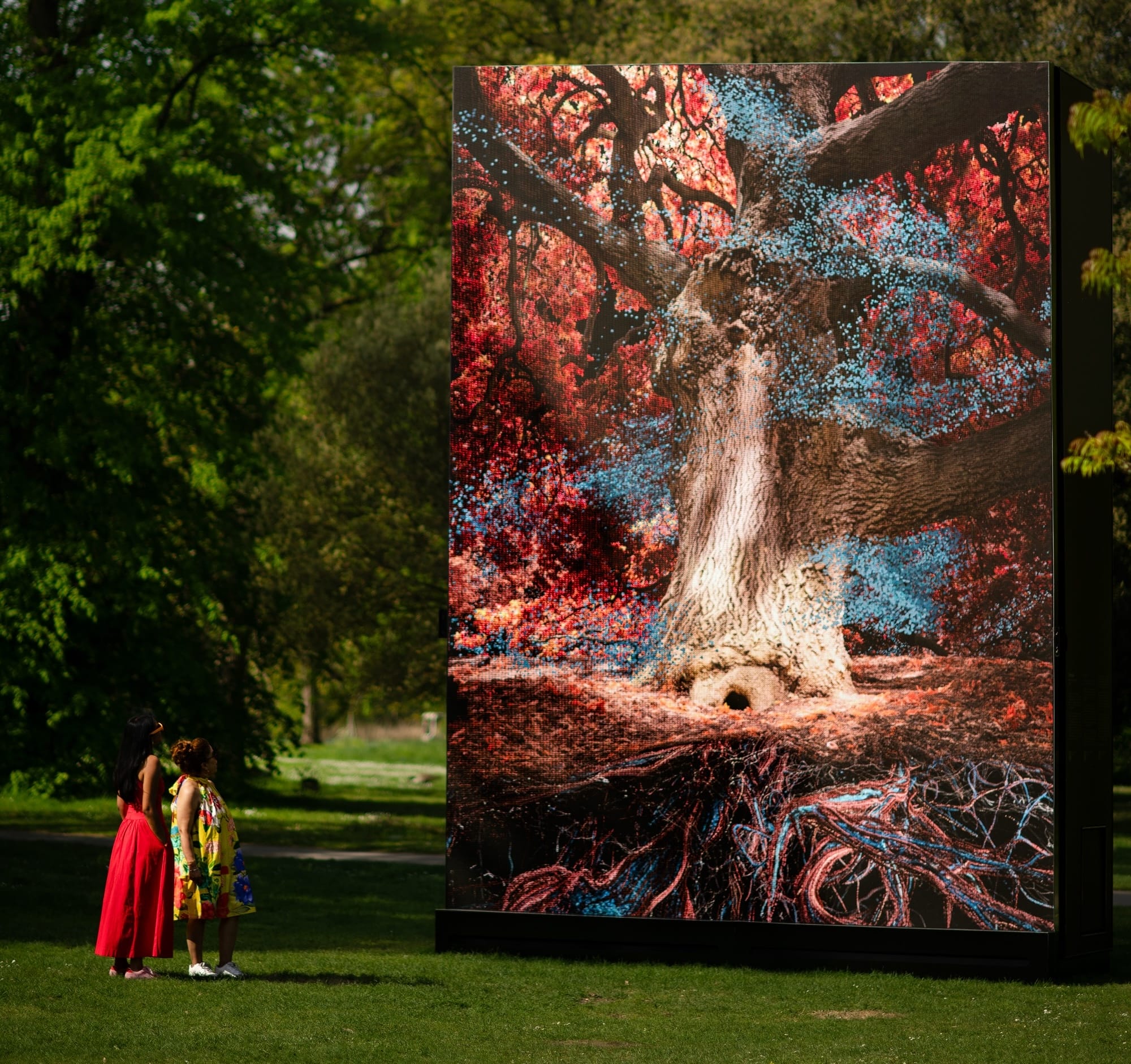
The project Of the Oak transforms a real Lucombe oak into a six-meter-tall digital diptych displayed at London’s Kew Gardens. The team Marshmallow Laser Feast (MLF) used lidar, CT scans, and ground-penetrating radar to capture the tree’s form, roots, and even the soundscape of soil microbes.

“This isn’t just about recreating a tree—it’s about showing its role as an ecological hub,” MLF explains. The oak’s branches and roots are deconstructed into data and reassembled as art. Viewers use a digital guide to explore the birds, insects, and fungi that coexist with the tree, while ambient recordings let them “hear” its life rhythms.
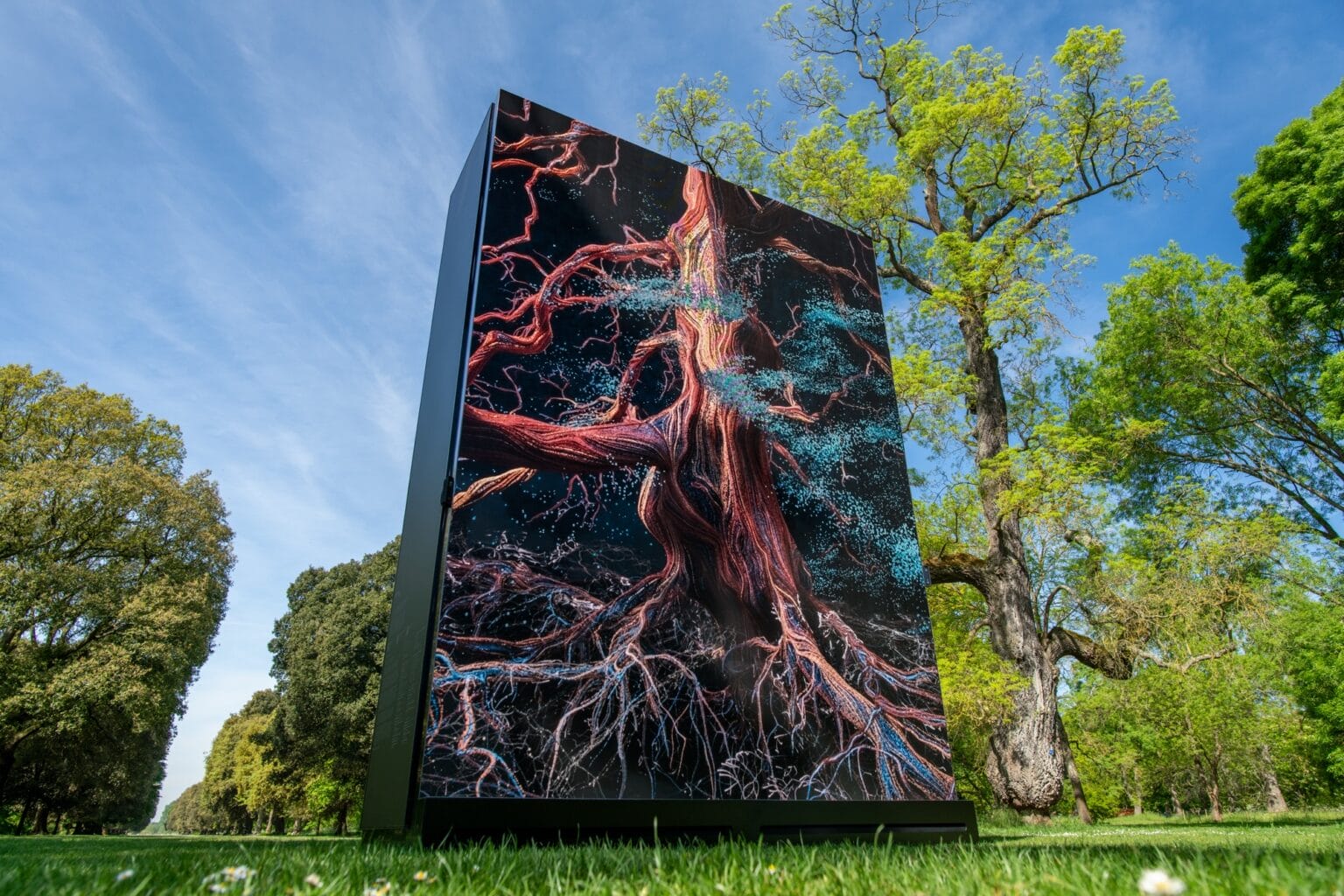
Of the Oak shares a “layered” logic with Salgado’s and Goudy’s works—Salgado overlaps literature and painting, Goudy merges geometry and nature, and MLF intertwines technology and ecology. All three visualize invisible relationships: literary metaphors, ceramic equilibrium, and the oak’s networked existence.
04 Shared Themes Across Mediums

“The Aleph & Other Stories” (2025), oil and oil pastel on linen, 216 x 164 centimeters
Despite their different paths, these artists address the same questions:
How to materialize the intangible?
Salgado turns words into color; Goudy gives porcelain the lightness of paper; MLF uses data to reconstruct life’s pulse.
How to balance control and chance?
Salgado’s brushstrokes embrace randomness; Goudy’s glazes rely on the clay’s natural absorption; MLF’s precision serves nature’s chaos.
How to engage the audience?
Salgado invites interpretation; Goudy’s pieces must be touched to reveal their balance; MLF’s interactivity lets viewers “become” the tree.
5. Art as a Bridge
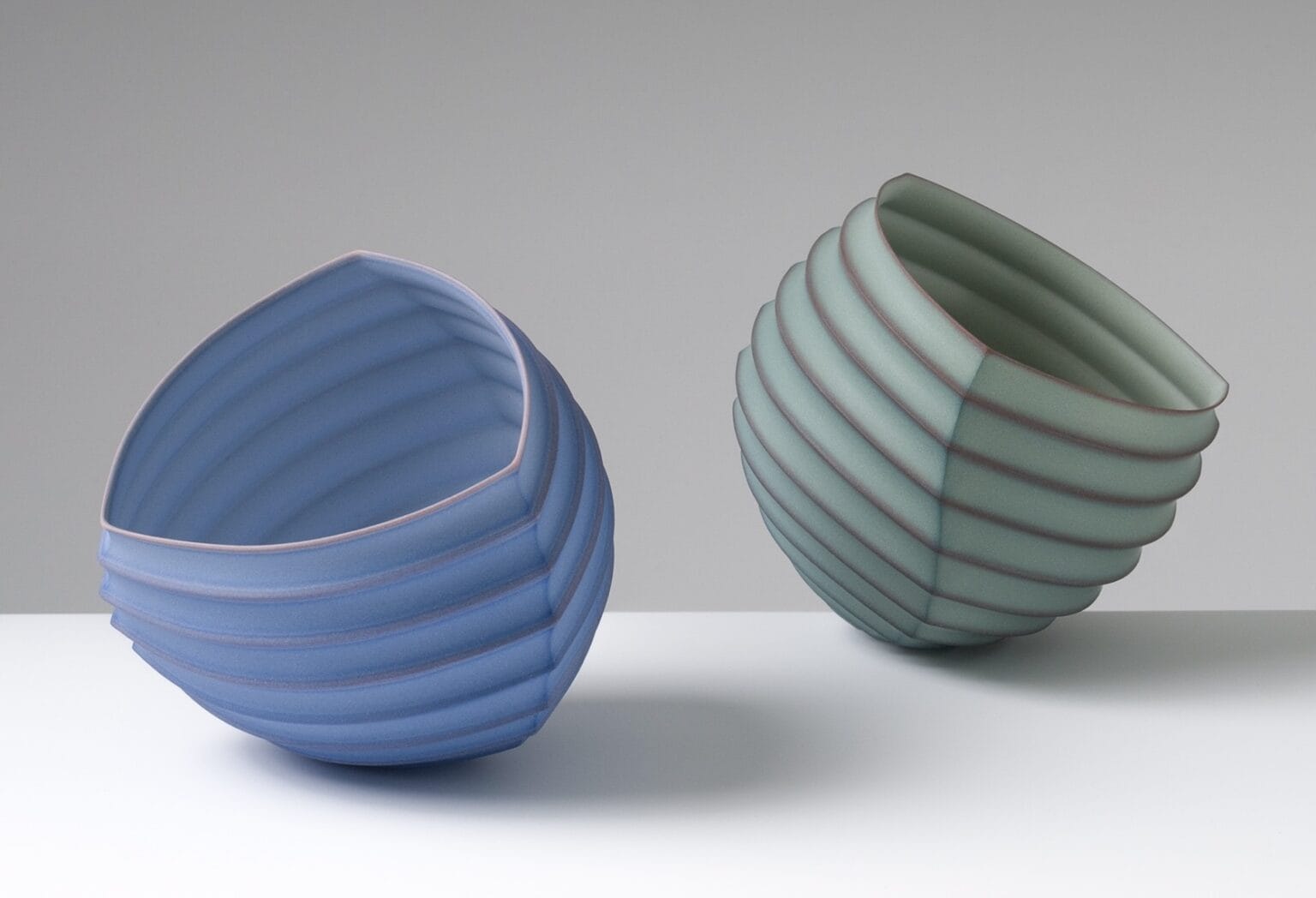
From Salgado’s literary paintings to Goudy’s ceramic folds and MLF’s digital ecology, art bridges divides—between text and image, craft and tech, humans and nature. This connection isn’t mere juxtaposition; it reveals hidden unities, reminding us that our engagement with the world is multidimensional, fluid, and full of possibility.

As Salgado puts it:
Everything can be embraced—there are no wrong answers.
Whether flipping through a book, holding a porcelain sculpture, or gazing at a digital tree, art’s ultimate gift may be showing us the unseen ties woven into everyday life.
By: Alan Huang composed with GenAI for ArtThat. Via: Colossal, All images courtesy of Damian Griffiths and BEERS London, Mark Goudy, Marshmallow Laser Feast, Royal Botanic Gardens, Kew, shared with permission


